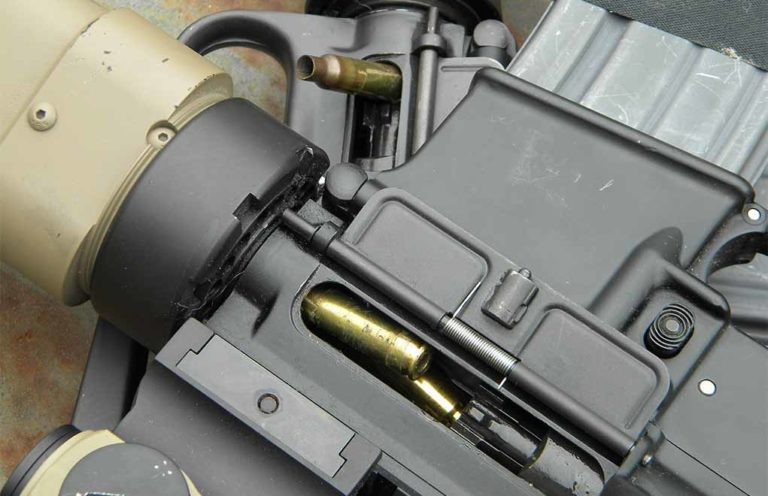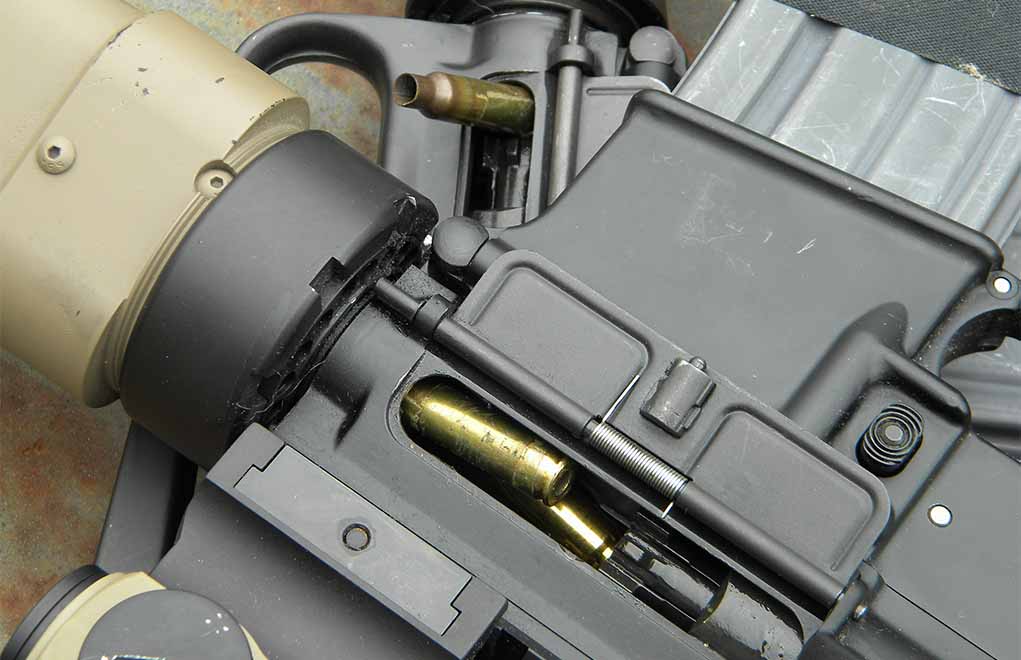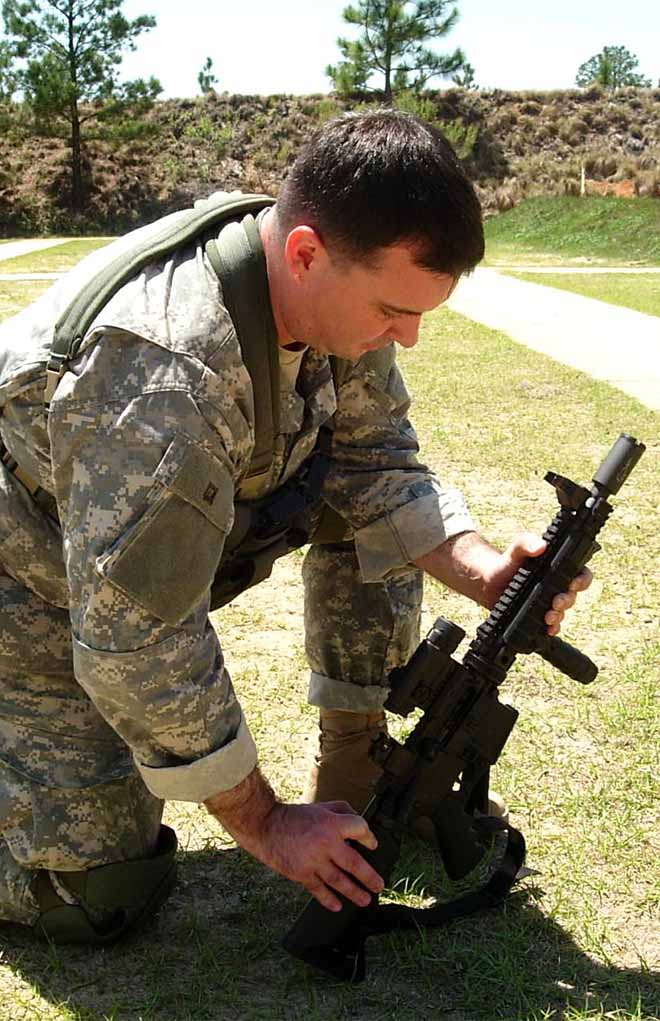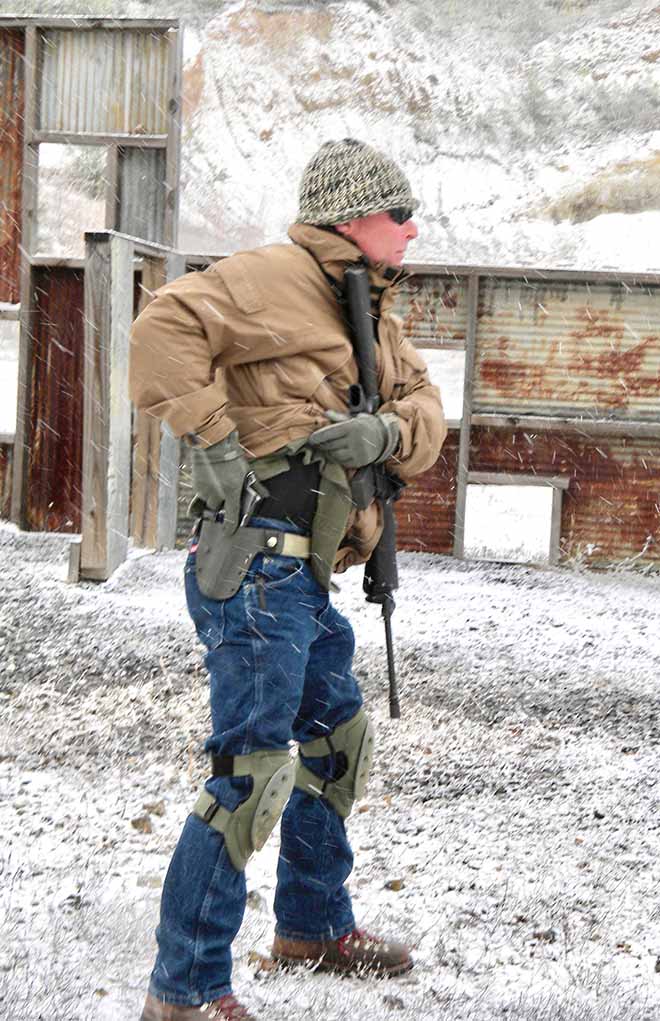

Whether it's a failure to feed or failure to eject, AR-15 malfunctions are part of life. Here's how to address them and keep you carbine running.
What Are The Five Types Of AR-15 Malfunctions:
- Type I: Failure to feed
- Type II: Failure to eject
- Type III: Double feed
- Type IV: Failure to extract
- Type V: Bolt Override
The AR platform is ideal for almost any application. No matter how your AR is configured—or your target—one thing common to every application: the skills used to manipulate the AR. And, the most important of the manipulations is the ability to clear a AR-15 malfunctions or stoppages and get the gun running again.
Administrative Actions
There are two categories of manipulations. “Administrative” actions are used to load and unload. During these actions, you have all the time you need; there’s no reason to rush. “Functional” manipulations—empty reloads and clearing stoppages—keep the AR running. In addition, you usually need to get it up and gunning as efficiently as possible.
Empty reloads are simple. After firing for a while, you know the mag is about to run dry. When the bolt locks to the rear, it’s not a surprise. Old mag out, new mag in, and use the bolt catch as a release to chamber a round. Carry on.

AR-15 malfunctions are different, because a stoppage is always unexpected. During a fight (a self-defense confrontation, law enforcement or combative operation), shooters are stressed, and they make mistakes. The probability of having a stoppage in a fight is much higher than it is on the range. And when your AR stops working, you need to fix it.
Common AR-15 Malfunctions
There are three common stoppages with the AR, as well as two others that appear occasionally. The techniques to clear these are based on the skills used to load and unload.
Raise Your AR-15 IQ:
- AR-10 vs. AR-15: How Stoner’s Rifles Stack Up
- AR-15 Calibers And Cartridges: What Should You Chamber Your Carbine?
- Best AR-15 Suppressor Options For A Quiet Advantage
- Retro AR-15: The Old Rifles That Inspired The New Ones
- What Factors Do You Need To Consider In An AR-15 Trigger Upgrade?
However, sometimes unloading requires a couple of extra steps, depending on what type of stoppage you have. If you know how to “speak” AR, it will tell you what’s required to get it running again.

The Type I stoppage is caused by no round of ammo in the chamber; a bad round of ammo, such as a faulty primer; or the bolt is out of battery. No matter the reason, when you press the trigger, the AR doesn’t fire.
Your immediate action is to “load.” Come off the trigger, tap and tug on the mag to ensure it’s locked in, and cycle the charging handle to load the chamber.
A Type II stoppage is a failure to eject an empty piece of brass (also called a “stove pipe” or “smokestack”). You press, but no bang! Your immediate action is to load. It’s a different type of AR-15 malfunction, but your initial response is the same: Off the trigger, tap and tug on the mag, and cycle to chamber a round.

Type III is the “double feed.” Two things, either brass and/or live rounds, are trying to occupy one space—the chamber. You press, and when the AR fails to fire, roll into the loading sequence. You cycle the charging handle, but the way it feels indicates that this isn’t ejecting the trash or loading the chamber. It’s time to unload.
Unloading
Unloading begins by removing the mag. The bolt is trying to feed a round out of the mag, so you’ll have to pull or strip the mag out of the receiver. Cycle the charging handle a minimum of three times; it’s usually going to take this to get rid of the stoppage. Once the charging handle feels right and the bolt is going into battery, it’s time to load.
Sometimes, Type III obstructions are wedged together tightly. You cycle three times, maybe four, with no joy. The handle is telling you to manually lock the bolt to the rear. Once it’s locked back, taking buffer spring pressure off the obstructions, put your fingers up the magwell and push. Shake to get the trash out. Manually cycle the bolt once more to ensure the chamber is clear; then load.
Types I through III stoppages are common. Types IV and V AR-15 malfunctions don’t happen often, but you still need to know how to fix them.
More AR-15 Malfunction Scenarios
Type IV is a case stuck in the chamber. You’re pulling the charging handle, but there’s no rearward movement—the case is stuck in the chamber, and the bolt’s extractor is hooked on the case. The AR is telling you to unload.

Remove the magazine. Hook two fingers on the charging handle, supporting the AR with the other hand. To generate the force needed to pull the case from the chamber, bang the rear of the stock against something solid while pulling rearward on the charging handle. Cycle to clear the chamber, then load. This action will either clear the case, or it rips it, which unfortunately means it takes time and tools to correct. This is a good time to transition to the pistol.
A Type V stoppage is a “bolt override.” A round or piece of brass gets stuck above the bolt. The AR lets you know it’s a Type V via the charging handle. It will usually come back part of the way, but there’s no spring pressure on it. Remove the mag. Put a finger or other tool up the mag well and in front of the bolt; the other hand should be on the charging handle. Pull back on the charging handle while pressing the bolt to the rear. Once the bolt is all the way back, hold it there and work the charging handle forward. This frees the obstruction. Quickly remove the finger/multi-tool and let the bolt fly forward.
The Goal
Ultimately, manipulations should be done without needing to see your firearm. Keep your eyes on target. Again, listening to what the AR is telling you will help with this process. With plenty of practice, you get to the point at which everything is done by physical confirmation and at a subconscious level.
To avoid trouble, make sure to have good gear. Quality parts, such as a proper extractor spring (I recommend the Colt “gold” spring), good mags and ammunition, go a long way to ensure your AR is reliable. Learn how to properly load, unload and reload.
But even then, stoppages occur. Make sure when that time comes you’re ready to fix the problem, safely and efficiently … and possibly under stress.
The article originally appeared in the August 2019 issue of Gun Digest the Magazine.

Next Step: Get your FREE Printable Target Pack
Enhance your shooting precision with our 62 MOA Targets, perfect for rifles and handguns. Crafted in collaboration with Storm Tactical for accuracy and versatility.
Subscribe to the Gun Digest email newsletter and get your downloadable target pack sent straight to your inbox. Stay updated with the latest firearms info in the industry.

![Best Concealed Carry Guns In 2025 [Field Tested] Wilson Combat EDC X9S 1](https://gundigest.com/wp-content/uploads/Wilson-Combat-EDC-X9S-1-324x160.jpg)


![Best 9mm Carbine: Affordable PCCs [Tested] Ruger Carbine Shooting](https://gundigest.com/wp-content/uploads/Ruger-Carbine-Shooting-100x70.jpg)
![Best AR-15: Top Options Available Today [Field Tested] Harrington and Richardson PSA XM177E2 feature](https://gundigest.com/wp-content/uploads/Harrington-and-Richardson-PSA-XM177E2-feature-100x70.jpg)
